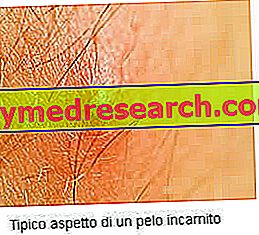Oats
The Oats (in French Avoine, in English Oat ) is a plant belonging to the Graminaceae family, Genus Avena, Sativa species; the binomial nomenclature of oats is Avena sativa .

Oat bran is rich in trigonelline or avenin (pyridine alkaloid with a neuro-muscular stimulating function); the leaves contain triterpene saponins, while all the aerial parts are rich in gramine (indole alkaloids with a soothing function); the stramentum (straw) is instead characterized by the presence of pectins and silicic acid. These last components are essential in the various herbal applications of the oat plant, mainly used against asthenia, physical exhaustion and seborrheic dermatitis (in the latter we use external stramentum ).
Like most cereals, oats have also been negatively impacted by corn, rice and wheat. However, recently, "psedo-healthy" dietary regimes (naturists, macrobiotics, and even the Zone diet) are again emphasizing their nutritional properties.
| Composition for: 100g of Oat Flour | ||||||||||||||||||||||||||||||||||||||||||||||||||||||||||||||||||||
 | ||||||||||||||||||||||||||||||||||||||||||||||||||||||||||||||||||||
Nutritional values (per 100 g of edible portion)
|
Oats are mainly consumed: whole seeds, shelled seeds, oat flakes, oat flour and oat milk.
It should be remembered that, although oat has excellent nutritional characteristics, its bran is less valuable (so to speak ...) than wheat.
Oat flour
Oat flour (whole or refined) is obtained by milling whole or peeled seeds.
Oat flour is used for the formulation of baked goods, but it is often mixed with wheat powder for proper leavening. Oat flour is more suitable for dry processing such as biscuits. The most famous oat-based recipe is undoubtedly porridge, a food for breakfast of Anglo-Saxon origin.
Oats are NOT a cereal that can be integrated into the AGLUTINATA diet (glute-free). To tell the truth, its relevance in the diet of the celiac is still the subject of controversy, since almost all celiac suffer it brilliantly. On the other hand, for safety, the same "Ministry of Health" allows it to be taken ONLY in the absence of intestinal compromises (mucosal hypertrophy) and in any case in absolutely limited portions (50g for adults and 25g for children).
The chemical characteristics of NON-integral oat flour will be described below.
Compared to that of the "noblest" cereals, oat flour has different nutritional properties. It has a rather high energy density, characterized by the greater presence of lipids which, as is known, supply more than twice the calories compared to carbohydrates. These are mainly unsaturated and have a fair concentration of essential polyunsaturated fats (mainly omega 6).
Thanks to the excellent presence of fibers, the starch of oatmeal is digested and absorbed slowly, to the benefit of the glycemic index of the food (moderate). Moreover, the fibrous portion contains excellent percentages of beta-gucani, beneficial molecules for the treatment of certain metabolic pathologies such as hypercholesterolemia (especially LDL) and type 2 diabetes mellitus.
Proteins are abundant (about 50% more than wheat flour) and rich in the amino acid lysine (instead tending to be lacking in cereals).
As far as the vitamin profile is concerned, oats contain above all vit. B1 (Thiamine), vit. PP (Niacin) and vit. E (α-tocopherol); with regard to mineral salts, on the other hand, excellent concentrations of potassium, iron, phosphorus and zinc are observed.



